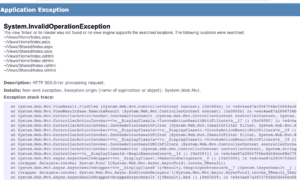In the ever-evolving landscape of the internet, managing web traffic and maintaining user privacy have become fundamental priorities for individuals and organizations alike. With increasing concerns about cyber threats, surveillance, and data tracking, tools that help regulate access and protect sensitive information have gained widespread use. Among these tools, http proxy servers play a vital role. Acting as intermediaries between clients and the internet, they help control, filter, and route web traffic efficiently while also offering privacy-enhancing features.
HTTP proxy servers are often misunderstood or overlooked by general users, yet they form the backbone of secure and manageable network infrastructures across various sectors. Whether for businesses aiming to safeguard internal networks, or users looking to browse the web anonymously, HTTP proxies provide a versatile solution to multiple challenges in digital communication.
What Is an HTTP Proxy Server?
An HTTP proxy server is an intermediary server that handles requests from clients (such as web browsers) to other servers (typically websites). When a user tries to access a web page, the request is first sent to the proxy server. The proxy then forwards the request to the destination web server, receives the response, and relays it back to the client.
The HTTP protocol is specifically designed for communication between web browsers and servers. Hence, HTTP proxies are used primarily to process web traffic. These servers interpret, monitor, and often modify HTTP requests and responses to serve various functions, including traffic management, security, and anonymity.
Types of HTTP Proxies
There are several types of HTTP proxies, each serving different purposes and offering varying levels of anonymity and control:
- Transparent Proxies
These proxies do not modify user requests and reveal the original IP address to the destination server. They are mostly used for caching and content filtering in organizations or networks, but they do not offer privacy protection. - Anonymous Proxies
These proxies hide the user’s IP address from the destination server but identify themselves as proxy servers. They provide a basic level of anonymity and are commonly used to prevent tracking. - High-Anonymity (Elite) Proxies
High-anonymity proxies go a step further by masking both the user’s IP and the fact that a proxy is being used. This provides a greater level of privacy, making it more difficult for web servers to detect or block proxy usage. - Reverse Proxies
These proxies sit in front of web servers rather than users. They manage incoming client requests, balance load among multiple servers, cache content, and enhance security for backend systems.
Each type of proxy has its own use case depending on the level of privacy, control, or performance required.
Managing Web Traffic with HTTP Proxy Servers
One of the core functions of HTTP proxies is managing the flow of web traffic. This management becomes essential in large networks where bandwidth optimization, access control, and performance enhancement are necessary.
- Bandwidth Optimization and Caching
HTTP proxies can cache frequently accessed content. When a user requests a web page, the proxy can serve the cached version instead of retrieving it from the internet every time. This reduces bandwidth usage and improves loading times for end users.
For example, in a corporate environment where multiple users access the same internal tools or external resources, caching by a proxy can drastically improve speed and reduce server load.
- Load Balancing
HTTP proxies can distribute web traffic across multiple servers, ensuring that no single server becomes overwhelmed. This not only improves performance but also ensures high availability of services. - Access Control and Filtering
Organizations use HTTP proxies to enforce internet usage policies. Administrators can block specific websites, restrict access to non-work-related content, or whitelist only certain domains. This is particularly useful in educational institutions and corporate environments where internet usage needs to be regulated. - Monitoring and Logging
HTTP proxies can monitor and log web traffic, providing valuable insights into user behavior, network usage, and potential security threats. These logs help administrators troubleshoot issues, detect anomalies, and enforce compliance policies. - Rate Limiting and Throttling
By controlling how many requests are sent to web servers within a given timeframe, proxies help prevent abuse, such as denial-of-service attacks or web scraping at scale. This rate-limiting functionality is crucial in maintaining the health and performance of web applications.
Enhancing User Privacy with HTTP Proxy Servers
In addition to managing traffic, HTTP proxy servers offer significant privacy benefits. Online privacy has become a pressing issue as individuals and organizations seek to protect themselves from tracking, profiling, and surveillance.
- IP Address Masking
When browsing the internet through a proxy, the user’s IP address is hidden from the destination website. Instead, the website sees the IP address of the proxy server. This prevents websites from identifying or tracking the user’s location and activity directly. - Anonymity and Identity Protection
Anonymous and high-anonymity proxies allow users to browse the web without disclosing their identity. This is especially important for journalists, whistleblowers, and users in regions with restricted internet access who need to communicate safely and anonymously. - Preventing Online Tracking
HTTP proxies can block or strip tracking headers and cookies from HTTP requests. By doing so, they prevent advertisers and analytics platforms from building user profiles based on browsing habits. - Bypassing Censorship and Geo-restrictions
Users can use HTTP proxies located in different countries to access content that may be blocked in their region. By routing traffic through a proxy server in a permitted location, users can bypass filters imposed by governments or internet service providers. - Securing Public Network Usage
When accessing the internet over public Wi-Fi networks, using an HTTP proxy can reduce exposure to snooping or man-in-the-middle attacks. Although HTTP proxies do not encrypt traffic, combining them with secure protocols like HTTPS can offer an extra layer of protection.
Limitations and Considerations
Despite their benefits, HTTP proxy servers are not without limitations. It’s important to understand their constraints and potential risks.
- Lack of Encryption
Standard HTTP proxies do not encrypt data. If a user is accessing a website over plain HTTP, data transferred between the proxy and the destination server can be intercepted. To ensure privacy, proxies should be used in conjunction with HTTPS, or a secure proxy variant like HTTPS proxy should be considered. - Misuse for Malicious Activity
Some users exploit proxies for illicit purposes such as hiding criminal activity or launching attacks. This has led to increased scrutiny of proxy services, and many websites block known proxy IP addresses. - Performance Bottlenecks
A poorly configured proxy or one with limited resources can become a bottleneck, slowing down web access. This is particularly problematic for organizations relying heavily on proxy traffic. - Privacy Trade-offs
While proxies protect users from third-party surveillance, they also route all traffic through a central point. If the proxy operator is untrustworthy or compromised, it can lead to data leakage. It’s essential to use reputable proxy services and, if possible, self-hosted solutions. - Compatibility Issues
Some websites use advanced anti-bot or geo-verification technologies that detect and block proxy traffic. This can cause certain features or content to become inaccessible when using a proxy.
Best Practices for Using HTTP Proxy Servers
To make the most out of HTTP proxies while mitigating risks, the following best practices are recommended:
- Use proxies that support HTTPS or combine HTTP proxies with secure HTTPS connections to protect data in transit.
- Avoid free or unknown proxy services that may log or sell user data.
- Regularly update and patch proxy server software to prevent exploitation.
- Employ access controls to restrict who can use the proxy and monitor usage logs for unusual activity.
- Use authentication mechanisms to prevent unauthorized access to proxy configurations.
Conclusion
HTTP proxy servers serve as a powerful tool for managing web traffic and enhancing user privacy. By acting as intermediaries between clients and web servers, they facilitate efficient access control, reduce bandwidth consumption, enforce organizational policies, and offer varying degrees of anonymity.
In a digital environment where control and privacy are more important than ever, HTTP proxies are not just useful—they are essential. Whether used for personal privacy protection, enterprise-level traffic management, or secure content delivery, these servers continue to shape the way information is accessed and protected across the web.
As technology advances and online threats become more complex, the role of HTTP proxies will continue to grow. By implementing these systems thoughtfully and securely, users and organizations can take significant steps toward a safer, more efficient, and more private digital experience.



































